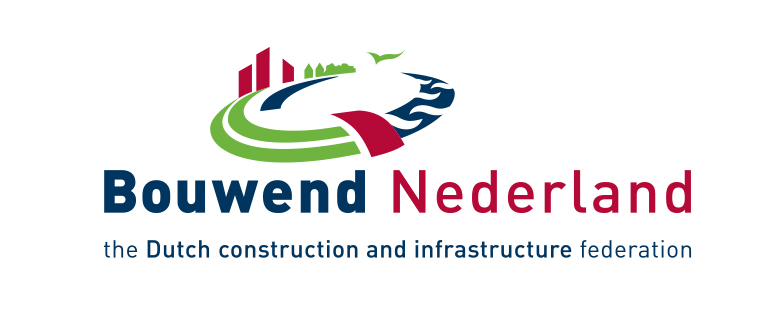Overall construction activity
In comparison to other sectors, the previous economic crisis lasted longer in the construction industry. A short-term recovery took place in 2014 and 2015, when the first EU budget period ended and when buildings financed from these funds were completed. Only 2017 saw a return to the trend of continuous growth, which accelerated in 2018 and 2019. Structural factors affecting the development in the sector are the impact of economic fluctuation and its manifestation in the reduction of public finances and thus the need to reduce public investment. Another important factor is the unsatisfactory quality of construction legislation, which is currently undergoing a demanding process of recodification. This is having a negative impact on the investment preparation of buildings, both in the private and the public sectors and in particular – for transport infrastructure. One of the riskiest factors is the lack of labour capacity stemming from the natural decline of workers.
Housebuilding
The development of housing construction - in the number of completed and started dwellings - mirrors to a large extent the development of the construction industry as a whole. The gradual increase since 2013 has been much slower than the fall since the year 2007. In 2018 the number of completed dwellings amounted to 33,000 and it is likely that it will amount to 35,000 in 2019. The largest share will be in Prague and Central Bohemia. Due to the age of the buildings, the demographic and social composition of the population, and the increasing demand for housing of higher quality, the average annual demand for new flats was calculated to be around 37,000 per annum. This was achieved only in the years 2007 - 2010. The trend of a faster increase in the number of dwellings in multi-dwelling buildings is slowly growing, even though the number of flats completed in family houses per year is predominant. Reconstruction, modernization, repairs, and maintenance of dwellings also form a significant share of production in this segment of construction output. The growing trend since 2018 has been registered in the number of new dwellings located in reconstructed non-residential buildings. Ongoing attention is being paid to increasing the energy efficiency of apartments. For newly completed dwellings, the proportion of those that meet category “A” (extremely economical) and category “B” (very economical) is increasing. Also, the additional insulation of older buildings, especially from the period of panel construction, is continuing very intensively. Increasing attention is being paid to the construction of passive houses.
GDP 2019
BILLION
POPULATION 2019
Total investment in construction in 2019
BILLION
Non-residential construction
Construction of non-residential buildings has been stagnating until 2017, with even declining trends in some categories. The return to growth started in 2018 when the number of completed buildings grew by 50% in all categories of construction. The total area of completed buildings and their investment costs increased as well. Drivers were administrative buildings and big shopping malls. Also, the construction of buildings for schools, university campuses, healthcare buildings, sports, and cultural objects increased continuously, including their repairs, maintenance, and energy efficiency improvement. This trend concerns not only big cities but also regional ones. The revival of the economy also positively influenced the reconstruction and extension of industrial buildings and storage facilities as well as new areas including a complete infrastructural network. A great deal of attention is also being paid to the completion of buildings and facilities that ensure compliance with increased environmental protection requirements.
Civil engineering
In the years 2016 – 2017, civil engineering recorded a significant decrease in the volume of completed works. The main reason is that the public sector is reducing its orders significantly. Typically, the public sector accounts for 45-50% of all orders. In 2017, the share dropped to only 32%. The situation improved in the last two years, but problems still persist and are mostly reflected in the works performed on the transport infrastructure network, particularly concerning the construction of the highway network. This is due to both the buying up of land and objections from civic initiatives. Both are the result of imperfect legislation. The adoption of the new Building Act should bring a significant improvement. The situation is better in the construction and modernization of the railway infrastructure, where the works are carried out on the investor´s own land. Improvements have been made in technical refurbishments and repairs of lower-class roads, including bridges, to which more funds have been directed. However, the issues of modernising both the long-distance and local power lines, water distribution networks, sewage, and gas networks remain unresolved.
| Per cent variation of investment in real terms on previous year | |||||||
| investment Mln. € fixed prices | |||||||
| Sectors | 2019a | 2016 | 2017 | 2018 | 2019a | 2020b | |
| 1. | Building | 11,698 | 6.5 | 7.4 | 10.3 | NA | NA |
| 1.1. Housebuilding | 3,622 | 27.1 | -9.9 | 10.7 | NA | NA | |
| 1.1.1. New | 2,050 | 13.7 | -1.7 | -10.1 | NA | NA | |
| 1.1.2. R&M | 1,572 | 60.7 | -39.5 | 98.2 | NA | NA | |
| 1.2. Non residential (c) | 8,076 | -2.7 | 19.0 | 8.6 | NA | NA | |
| 1.2.1. Private | 5,997 | 16.8 | 21.0 | 26.0 | NA | NA | |
| 1.2.2. Public | 2,079 | -24.2 | 11.2 | -19.4 | NA | NA | |
| 2. | Civil Engineering | 7,057 | -23.6 | 1.2 | 1.7 | NA | NA |
| (1 + 2) | Total Construction | 18,755 | -8.3 | 4.9 | 6.9 | 2.0 | NA |
| a: estimate - b: forecast - c: incl. R&M | |||||||
| Number of building permits in residential construction | |||||||
| 2016 | 2017 | 2018 | 2019a | 2020b | |||
| single dwelling | 15,865 | 18,678 | 19,186 | 19,433 | NA | ||
| collective dwelling | 5,870 | 7,244 | 7,280 | 12,246 | NA | ||
| other types of dwelling | 5,489 | 5,599 | 6,655 | 6,501 | NA | ||
| Total | 27,224 | 31,521 | 33,121 | 38,180 | NA | ||
| (Collective dwellings and other types of buildings: in number of flats) | |||||||



































